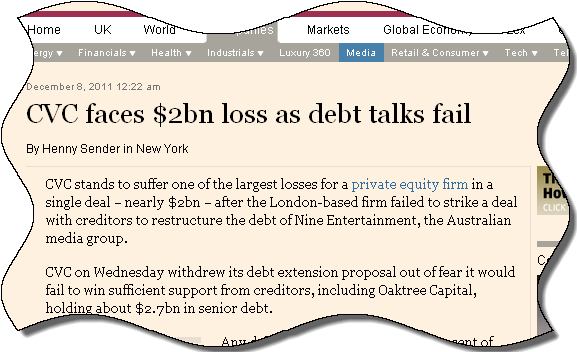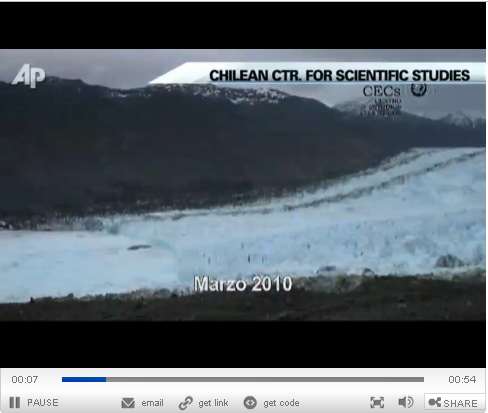Australian caution justified? One of the consistent claims of the United States oil shale gas industry and its method of production involving “fracturing” has been “we’ve never had one confirmed case of groundwater contamination”. Well, that is a claim that can be made no longer.
The US Environmental Protection Agency (EPA) overnight released a draft analysis of data from its Pavilion, Wyoming ground water investigation showing that “ground water in the aquifer contains compounds likely associated with gas production practices, including hydraulic fracturing”. The EPA has found:
Findings in the Two Deep Water Monitoring Wells:
EPA’s analysis of samples taken from the Agency’s deep monitoring wells in the aquifer indicates detection of synthetic chemicals, like glycols and alcohols consistent with gas production and hydraulic fracturing fluids, benzene concentrations well above Safe Drinking Water Act standards and high methane levels. Given the area’s complex geology and the proximity of drinking water wells to ground water contamination, EPA is concerned about the movement of contaminants within the aquifer and the safety of drinking water wells over time.
Findings in the Private and Public Drinking Water Wells:
EPA also updated its sampling of Pavillion area drinking water wells. Chemicals detected in the most recent samples are consistent with those identified in earlier EPA samples and include methane, other petroleum hydrocarbons and other chemical compounds. The presence of these compounds is consistent with migration from areas of gas production. Detections in drinking water wells are generally below established health and safety standards. In the fall of 2010, the U.S. Department of Health and Human Services’ Agency for Toxic Substances and Disease Registry reviewed EPA’s data and recommended that affected well owners take several precautionary steps, including using alternate sources of water for drinking and cooking, and ventilation when showering. Those recommendations remain in place and Encana [the gas producer] has been funding the provision of alternate water supplies.
Late last month the Australian Senate committee on rural affairs and transport recommended that the federal government impose a moratorium on further coal-seam gas projects in the Murray-Darling food bowl that overlay the Great Artesian Basin. The committee found:
The coal seam gas industry is a relatively short-term prospect. Individual gas wells have a life of about 15 years. The industry is likely to be worked out in the next 50 years.
Thus the interests of the industry must not be allowed to undermine or permanently compromise the long-term future of other sectors, most notably agriculture and the environment.
Given the progress of the industry, it is clear that workable compromises must be struck between the competing interests.
This may require further delay in approving new developments or temporary suspension of exploration in particular regions while a sound research-based understanding of geology, groundwater, aquifers and soils is developed.
It may involve the exclusion of prime agricultural land or land exhibiting particular soil types or topography from gas exploration and production.
Restrictions on drilling in particularly sensitive aquifers and on certain production techniques such as fracking (hydraulic fracturing) might be necessary.
Global warming is getting serious! Perhaps The Irish Times has found the way to get the message across to the masses …

But it doesn’t seem to have reached Durban. The reports I read from the UN conference are words, words and nothing but words with promises, like my Dad used to say, like pie crust — waiting to be broken.
Maybe in Chile the truth about global warming is beginning to dawn. Researchers this week released a series of time-lapse photos showing the dramatic retreat of the Jorge Montt Glacier in Patagonia, with its snout retreating more than a half mile between February 2010 and January 2011.
Searching for readership — population and tattoos are my go. I can cop a tip like the next man, hence my bringing you these highlights of the morning’s news:
Bloomberg: Global natural gas, oil and nuclear consumption will rise 32 percent during the next three decades as population growth drives fuel demand and environmental restrictions reduce coal use for the first time since the 18th century, Exxon (XOM) Mobil Corp. said.
Jammu: The Indian army will not recruit men with permanent tattoos on any part of the body, save the arms. The army says permanent tattoos are health hazard, as they can act as carriers of certain diseases.
If you would like an explanation for my featuring these startling revelation, see this piece on Crikey’s The Stump blog.
Buying television stations from a Packer. As bond was to Kerry so CVC was to James. From The Financial Times:

A quote for the day. A French diplomat on UK Prime Minister David Cameron demanding that decisions at today’s EU summit protect the interests of the City of London:
“Britain is like a man who wants to go to a wife swapping party without taking his wife.”
Buying the kiddies’ Christmas poison. Greenpeace Hong Kong has released the results of a survey conducted with IPEN of 500 children’s products purchased in five Chinese cities: Beijing, Guangzhou, Hong Kong, Shanghai, and Wuhan:
“The results showed that one-third of tested products contained at least one toxic metal at levels of concern. Forty-eight samples (9.6% of the products) contained more than one toxic metal, increasing the possibility of harm. None of the tainted products contained warning labels to inform consumers about their toxic ingredients.
“The toys that tested positive for heavy metals, including lead, were found in every category of product, no matter whether it was branded or non-branded, cheap or expensive. In short, no matter who or where you buy your toy from in China, there is a possibility that a toxic metal is present.”
The Greenpeace-IPEN shoppers purchased a wide variety of products, ranging from school supplies to clothing to popular products for young children. Some were plastic, some were made of wood, and others included metal parts and jewelry.
To measure the metals, investigators used a portable X-ray fluorescence analyzer (XRF), testing for six toxic metals: antimony, arsenic, cadmium, chromium, lead, and mercury. All six metals are well-known to cause serious harms to human health, especially in children.








I’m sure the oil shale industry already has its spin in place.